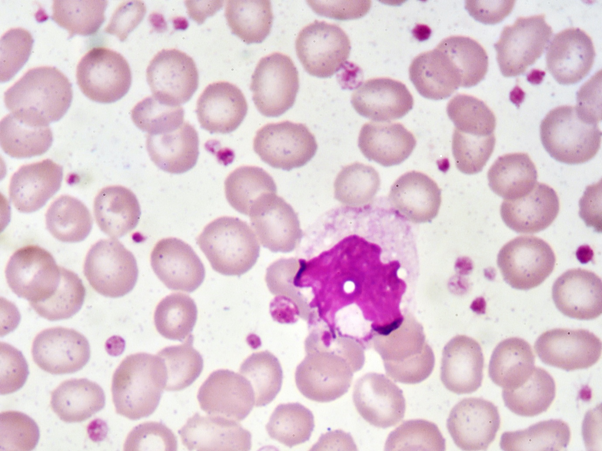What Are Monocytes? – Definition, Function & Blood Test

We are surrounded by germs in our environment that can have a negative effect on us. They can cause us to be ill and give us harmful infections. In severe cases, they can cost us our lives. When these germs enter our bodies, our immune system views them as intruders that must be fought off. Our immune system has a key component called the white blood cells, of which there are several different kinds.
What are Monocytes?
Monocytes are a type of white blood cell that fights off bacteria, viruses, and fungi. Monocytes are the biggest type of white blood cell in the immune system. Firstly, they are formed in the bone marrow, which is released into our blood and tissues. When certain germs enter the body, they quickly rush to the site for attack. Monocytes are also the largest leucocytes.
Monocytes can also divide into dendritic cells in the tissues. Dendritic cells are cells that process antigen material and present it to the body’s immune (defense system). This is why they are considered a type of antigen-presenting cell.
Monocytes respond to signals of inflammation in the body and can arrive quickly (about 8 to 12 hours) to areas of infection or tissue damage and divide into macrophages and dendritic cells, which provides further immune system response.
The lowest phase or the surface of a monocyte is not so smooth because it contains some specific proteins on it that allows it to bind with the different kinds of virus or bacteria cell.
The major motive of phagocytosis is firstly to protect the organism from attack by harmful pathogens and secondly to remove all the damaged or dead cells from the blood. Monocytes are very flexible cells in that they can change depending on cues they received from the environment.
Whereas there are some proteins present in the blood that attach to the virus or bacteria’s, which makes it much easier for the cells of the immune system to recognize the pathogens.
Functions of Monocytes
- One of the major functions is to move towards the specific pathogenic cell and eventually adhere to it when it is close enough.
- Attaching to the pathogen stimulates the production of a pseudopodium.
- To protect the body when under attack.
- To engage in phagocytosis by coating the foreign material with complement or antibodies.
- To expose the fragments of the foreign substance with help from a special molecule known as an MHC.
- To divide itself into dendritic cells in the tissues.
- The ability to change into another cell before facing germs.
- To perform the activity of consuming harmful bacteria, viruses, and fungi.
- To identify the kinds of germs that have entered the body.
Types of Monocytes
Dendritic cells
These are antigen-presenting cells which are able to mark out cells that are antigens (foreign bodies) that need to be destroyed by lymphocytes.
Macrophages
These are phagocyte cells which are larger and live longer than neutrophils. Macrophages are also able to act as antigen-presenting cells.
Treatment of High Monocytes Count
For treating high monocytes, it’s important to diagnose the underlying cause. It is always found right to advisable when you consult your doctor who is the correct professional to identify the abnormal condition and help to resolve the abnormality.
Lifestyle changes such as weight management, regular exercise and adequate sleep help to control the monocytes count. Any kind of proper food intake and diet supplements consumption can help to augment the treatment process and can regulate high monocytes level.
Food items such as:
- Garlic
- Onion
- Spinach
- Grapes
- Black cumin
- Turmeric
- Beans
- Broccoli
- Cherries
A latest finding but a very rare kind of disorder is the absolute or complete absence of monocytes. People having infections, syndrome and especially skin infections which are generally caused by microorganisms that do not usually cause any kind of infection in the body. Diagnosis is a type of blood test which shows the absence of monocytes through genetic testing.













